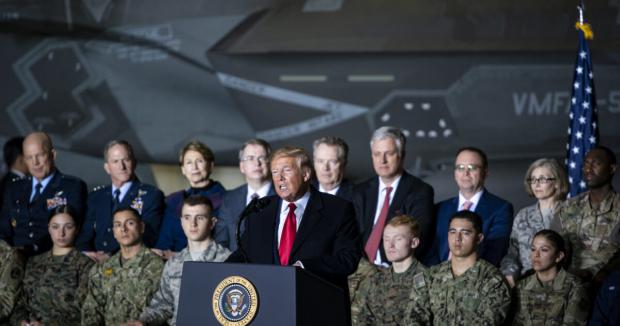
Breaking News
 The Mystery of Trump, Ukraine, and Russia
The Mystery of Trump, Ukraine, and Russia
 Resolute Space 2025: How the U.S. Space Force is Arming for Invisible Wars in the Stars
Resolute Space 2025: How the U.S. Space Force is Arming for Invisible Wars in the Stars
Top Tech News
 This "Printed" House Is Stronger Than You Think
This "Printed" House Is Stronger Than You Think
 Top Developers Increasingly Warn That AI Coding Produces Flaws And Risks
Top Developers Increasingly Warn That AI Coding Produces Flaws And Risks
 We finally integrated the tiny brains with computers and AI
We finally integrated the tiny brains with computers and AI
 Stylish Prefab Home Can Be 'Dropped' into Flooded Areas or Anywhere Housing is Needed
Stylish Prefab Home Can Be 'Dropped' into Flooded Areas or Anywhere Housing is Needed
 Energy Secretary Expects Fusion to Power the World in 8-15 Years
Energy Secretary Expects Fusion to Power the World in 8-15 Years
 ORNL tackles control challenges of nuclear rocket engines
ORNL tackles control challenges of nuclear rocket engines
 Tesla Megapack Keynote LIVE - TESLA is Making Transformers !!
Tesla Megapack Keynote LIVE - TESLA is Making Transformers !!
 Methylene chloride (CH2Cl?) and acetone (C?H?O) create a powerful paint remover...
Methylene chloride (CH2Cl?) and acetone (C?H?O) create a powerful paint remover...
 Engineer Builds His Own X-Ray After Hospital Charges Him $69K
Engineer Builds His Own X-Ray After Hospital Charges Him $69K
 Researchers create 2D nanomaterials with up to nine metals for extreme conditions
Researchers create 2D nanomaterials with up to nine metals for extreme conditions
Resolute Space 2025: How the U.S. Space Force is Arming for Invisible Wars in the Stars

Over 700 personnel, dubbed Guardians, teamed up with troops from allied nations to simulate battles in the vast emptiness above Earth.
This event, known as Resolute Space 2025, is aimed at preventing the rising danger of invisible assaults that could cripple global communications without firing a single shot.
The exercise began on July 8 and unfolded across multiple time zones, spanning roughly 50 million square miles. It integrated forces from about a dozen countries, including partners in Asia, Europe, and Australia, to practice seamless coordination.
The goal was to sharpen responses to disruptions in a chaotic setting, blending real-world assets with digital replicas for maximum authenticity.
In the scenarios, a designated aggressor group mimicked hostile nations by unleashing non-kinetic strikes on satellite networks. These included bursts of electronic static to drown out signals, sneaky hacks to spoof data feeds, and maneuvers to nudge orbits off course.
Defending teams raced to pinpoint the sources, restore functionality, and adapt tactics amid the fog of simulated chaos.
Orbital space previously served as a peaceful domain for navigation aids, intelligence gathering, and routine links between forces.
That illusion has shattered as countries have begun to explore space weaponry which could turn satellites into prime targets. Military planners now view the cosmos as a domain ripe for sabotage.
Adversaries like China and Russia have poured resources into tools that threaten U.S. assets without leaving debris trails. By mid-2025, China executed dozens of orbital missions, deploying over a hundred new objects to test grappling tech and signal blockers.
Russia, meanwhile, has experimented with nuclear options and co-orbital chasers that could shadow or disable enemy craft, fueling fears of rapid escalation.
Experts note these developments proceed at an alarming speed, outpacing Western defenses and risking a cascade of satellite failures.
The Space Force, established just six years prior, is exploring tactics to navigate these new challenges. Exercises like Resolute Space 2025 enhance the U.S.'s capabilities through flexible doctrines and cross-service teamwork necessarily to counter such evolving threats.

 Good News for Liberty
Good News for Liberty Coffee Prices on the Rise
Coffee Prices on the Rise

